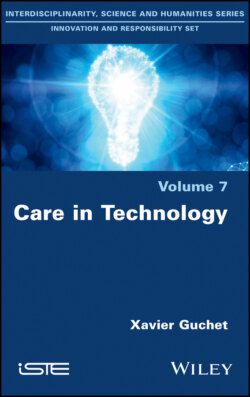Читать книгу Care in Technology - Xavier Guchet - Страница 12
I.3. The intellectualist conception of technology
ОглавлениеThere is moreover a conception of technology implicit in the two-layer model of care. This model is in fact underpinned by three assumptions affecting the relations between human life, technology, and care. The first assumption is that human life can be summed up in two dimensions which are difficult to definitively articulate: life is understood on the one hand according to the dimension of the being-in-life, and on the other hand, as a life of the mind. We are “first of all” living beings according to Lévi-Strauss, which means that we are “subsequently”, also, something else than living beings. We are not cut off from nature, certainly, but that does not mean that we have absolutely no exteriority in relation to it.
The other two presuppositions of the two-layer model of care relate to the very concept of technology. On the one hand (and thus the second presupposition), technology is defined as the whole set of means available to us to be able to intervene in nature, both inert and living, from a point of view exterior to it. This conception of technology is intellectualist. Technology is the means by which intelligence intervenes upon nature as upon an external, receptive material.
On the other hand (third presupposition), technology as such, or at least a certain type of technology, is considered to be incompatible with care. The two-layer model of care, affirming the unity of all care, is certainly unequivocal: no relationship of care cannot be conceived without technology. A negligent action, performed without precaution and devoid of any real involvement of the one who performs it, is not in the service of care. A gesture that is not careful, that is to say which is not executed with the required technique (which is learned and requires training) cannot be caregiving – such is the message of the parable of the man of Song. Caregiving requires competence. That being said, when technology refers no longer to modestly equipped know-how but to the innovations of chemical and mechanical industry, for example, its relationship to care appears less obvious, more external, and more conflicted. In sum, there are two conceptions of the relationship between care and technology: a relationship of necessary implication on one hand – there is no care without the security of a controlled and properly equipped action, whether it is care for humans or care for nature; on the other hand, a relationship of exteriority in principle, making problematic the possibility of caregiving when the concept of technology signifies, to continue the example, the devices of mechanical industry and chemical products.
The first assumption, affecting both contradictory meanings of the concept of life, is absolutely essential and commands the other two. Indeed, it is because life, in humans, is regarded as dual, consisting of a subject pole (intelligence, the spirit) and an object pole (the body, the being-in-life), that technology must inevitably be understood according to the same division: it is an emanation of the subject pole and it applies to the object pole from a point of view external to it. An intellectualist concept of technology is the result of a bifurcated conception of life in humans. In addition, to the extent that its intervention targets the object pole, that is nature as the theatre and support of the vital processes, technology has an ambivalent relationship to care: certainly there is no care without technology, but the risk of a dissociation between performing cure and taking care is widening as technologies become technosciences.
